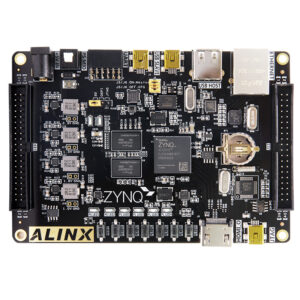One element that has revolutionized the technology in the past decade is known by its name Transistor. Transistors have enabled some of humankind’s biggest leaps in technology. Transistors certainly helped start the computer age and it also revolutionized computer design and spawned an entire industry in California’s aptly-named Silicon Valley.
Let’s see what a Transistor is all about
It is named as Transistor which is of two terms: “transfer-of-resistor.” It means that the internal resistance of transistor transfers from one value to another values depending on the biasing voltage applied to the Transistor. Thus it is called TRANSfer resISTOR: i.e. TRANSISTOR.
A Transistor is a semiconductor device used to amplify and switch electronic signals and electrical power. Transistors works wonderfully for computer production. With smart engineering, Transistors help computers power through huge numbers of calculations in a short time. The simple switch operation of transistors is what enables our computer to complete massively complex tasks. In a computer chip, Transistors switch between two binary states — 0 and 1. This is the language of computers. One computer chip can have millions of transistors continually switching, helping complete complex calculations.
Structure of a Transistor
Transistors are made from silicon, a chemical element found in sand, which does not normally conduct electricity (it doesn’t allow electrons to flow through it easily).
Because electrons have a negative charge, silicon treated this way is called n-type (negative type) and also known as NPN Transistor. We can also dope silicon with other impurities such as boron, gallium, and aluminum. Silicon treated this way will lose some electrons, so electrons in nearby materials will tend to flow into it. A lack of electrons is the same thing as a positive charge, so we call this sort of silicon p-type (positive type) and also known as PNP Transistor.
Brief Introduction to a NPN Transistor
The NPN transistor can be used in two different modes: forward biased mode and the reverse biased mode. In forward biased mode, the electric current can easily flow through it. So it acts like a CLOSED SWITCH. However, in reverse biased mode, the current through it is practically zero and thus, it acts like an OPEN SWITCH.
Pin Diagram

PIN DESCRIPTION
- Base
- Collector connected to mounting base
- Emitter
Working Principle of NPN Transistor
The construction for a Bipolar NPN Transistor are shown in figure 2. The voltage between the Base and Emitter (VBE), is positive at the Base and negative at the Emitter because for an NPN Transistor, the Base terminal is always positive with respect to the Emitter.

Also the Collector supply voltage is positive with respect to the Emitter (VCE). So for a bipolar NPN Transistor to conduct the Collector is always more positive with respect to both the Base and the Emitter.

In Forward biased condition, the collector is connected to high positive voltage with respect to base i.e. VCB is very high. So C-B junction is reverse biased. VCB >> VBE. The base is connected to low positive voltage with respect to emitter i.e. VBE is low. When we increase VBE ≥ 0.7V (the value 0.7V is a typical value of potential barrier voltage) the Transistor is forward biased. Now large number of electrons in emitter layer is repelled by negative terminal of VBE and they flow towards B-E junction. They cross the junction and enter into small base layer. Here some electrons combine with holes. Also some of them are attracted by positive terminal of VBE and remaining maximum number of electrons flow into collector layer, crossing the second junction i.e. C-B junction.

The resident electrons of collector are repelled by these (guest) electrons and thus, then all the electrons are present in collector layer are attracted by positive terminal of VCB. Thus, all these electrons complete their journey back into emitter layer and produce conventional currents in the transistor as shown in the above circuit. Thus, as per Kirchhoff Current Law, we can write, IC + IB = IE. Now when VBE is still increased, more electrons are repelled by negative terminal of VBE. So base-emitter junction is more and more forward biased. Thus the base current (IB) increases, which in turn increases Ic. Hence, we can say that collector current (IC) is the function of base current (IB). But there is a typical value of VBE for each transistor, at which the collector current IC no longer remains the function of base current Ib. Also collector current is directly proportional to the base current. In all this process, maximum number of electrons from emitter layer flow into collector layer. So collector current is almost equal to emitter current. Hence we say that, collector current is proportional to emitter current.
In Reverse Biased condition, both the junctions are reverse biased as the batteries are connected in opposite direction. Due to VCB battery, the collector-base junction is reverse biased. Similarly, due to VEB battery, the base-emitter junction is also reverse biased. So charges cannot flow and current in the Transistor is practically zero. This method is not useful as the Transistor is in “cut-off” state since current is zero.
Example of a NPN Transistor

In this circuit there are two Transistors done in the Proteus tool. In the first Transistor Q1 the base is grounded and no current can flow into it. As a result the Transistor is “off” and no current can flow through the bulb. In the other case Q2, there is a current flowing into the base and so the Transistor is “on” and the current can flow through it resulting in the light bulb being on.
Thank you for reading the blog,
For more information about the product please visit:
http://www.tenettech.com/category/393/transistor
For technical queries please drop an e-mail: info@tenettech.com






